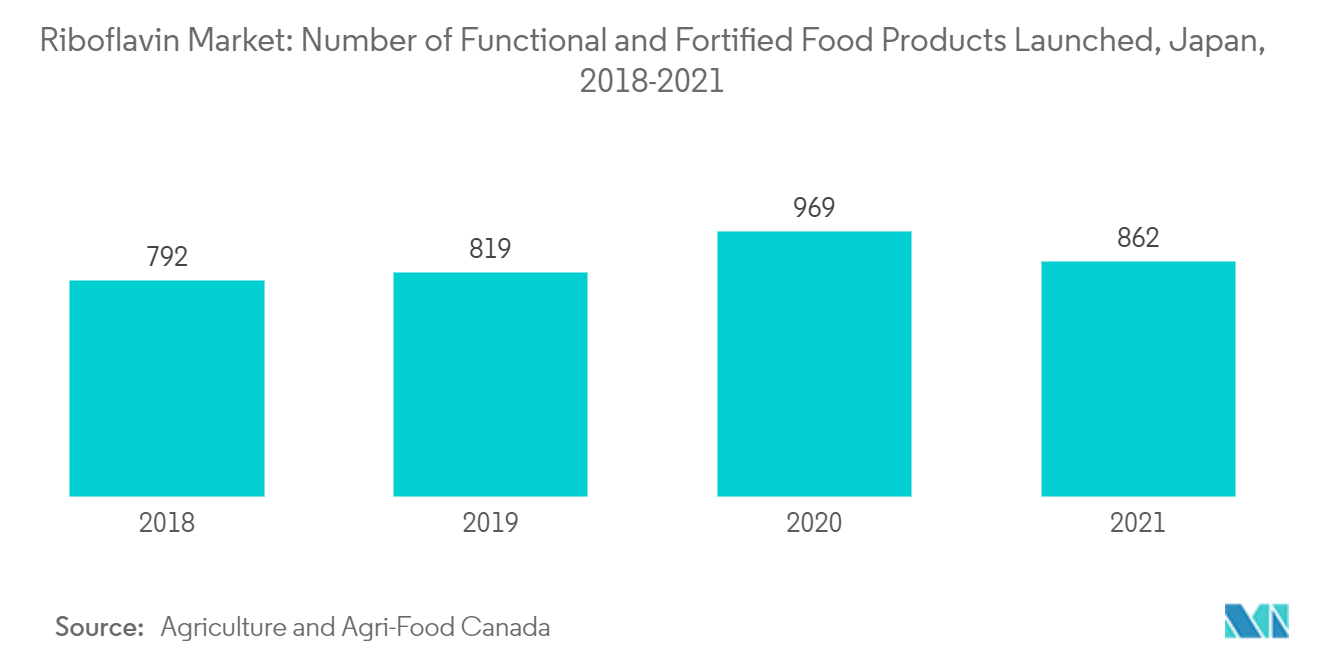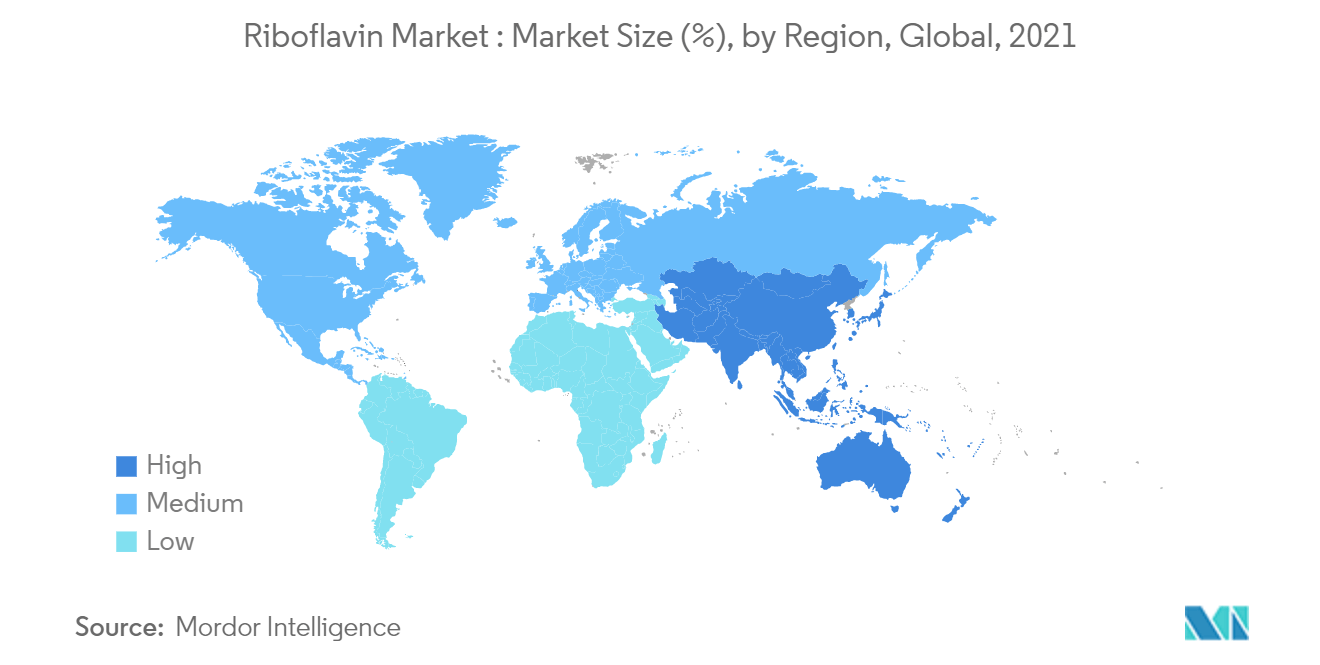Market Trends of Riboflavin Industry
Increasing Demand for Functional and Fortified Food
- In the past, food fortification has been used to prevent micronutrient malnutrition. But today, food fortification is used to improve health and wellness. By increasing baked food's better-for-you attributes, fortification provides avenues for manufacturers to add value to their product categories.
- For instance, according to the Food Fortification Initiative (FFI), a global organization that supports the fortification of industrially milled flour, maize flour, and rice, approximately 31% of the world's industrially milled wheat flour is fortified. The FFI works with country leaders to promote, plan, implement, and monitor the fortification process to improve the nutritional quality of these staple foods.
- Various government initiatives are being taken to increase the consumption of fortified food and beverages, especially in developing countries. Similarly, the Food and Agricultural Organization (FAO) and World Health Organization (WHO) have identified food fortification as one of the strategies to reduce the prevalence of malnutrition, particularly in underdeveloped and developed countries.
- The nutrients most often included are iron, zinc, and the following B vitamins, namely folic acid, niacin, riboflavin, thiamin, vitamin B12, and vitamin B6. Thus, with the increasing consumer demand for fortified food and beverages with bioactive and essential vitamins, followed by increasing consumer awareness regarding vitamin B2/riboflavin deficiency, the manufacturers are actively expanding their product offerings with the fortification of riboflavin to meet the ongoing consumer demand.
- In October 2022, Fonterra expanded its product portfolio with the launch of BioKodeLab, a supplement brand aimed at improving cognitive performance. According to the company, the product consists of vitamin A, riboflavin, lutein, and zeaxanthin to support macular health.
- .

Asia-Pacific to Drive the Global Market For Riboflavin
- Asia-Pacific holds the dominant position in the riboflavin market, driven by factors such as rapid urbanization, industrialization, ongoing product development, and technological advancements in the region. Moreover, increasing health awareness among people, the rise in per-capita income, and a wide range of applications have been further augmenting the market growth.
- For instance, according to World Bank, gross domestic product (GDP) per capita in Singapore, Australia, and Japan was USD 72,794, 59,594, and 39,285, respectively, in 2021. Some of the popular riboflavin sources in the region encompass meat, eggs, salmon, and dairy products.
- However, with the growing consumer preferences toward veganism/vegetarianism across the region, there has been rising pressure on the food ingredients manufacturers, like BASF SE, MTC Industries Inc., and DSM, to invest in research and development and introduce plant-based riboflavin ingredients for multiple industrial applications such as food and beverages, personal care products, nutraceuticals, pharmaceuticals, and animal feed.
- As cereals are inexpensive and consumed in large quantities in the country for producing multiple food products like porridge, breakfast cereals, raised bread, flatbread, biscuits, cereal-based beverages, and seedling juices, attempts are being made to enrich these cereal grains and flour with vitamins B1, B2, B3, and B9 using fortification and biofortification, as recommended by the Food & Drug Administration (FDA).
- Additionally, riboflavin deficiency is a problem in many parts of Asia and the Pacific, especially in South and Southeast Asia. In response, governments and health organizations have launched fortification programs to increase the nutritious density of commonly consumed foods like rice, flour, and oil by adding vitamins and minerals like riboflavin. Fortification initiatives are driving riboflavin demand in the region.

